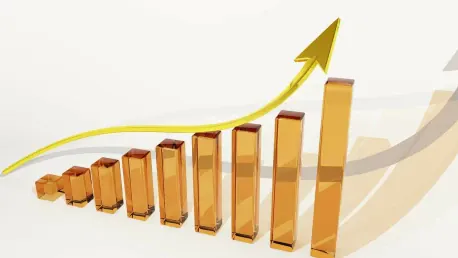The commercial insurance market in the United States has been experiencing a steady increase in rates, a trend that has persisted since the end of the COVID-19 pandemic. According to Willis Towers Watson’s (WTW) Commercial Lines Insurance Pricing Survey (CLIPS), the overall average price increase for commercial lines insurance during the third quarter of 2024 was 6.1%. This article delves into the factors driving these increases, the sectors most affected, and what businesses can expect moving forward.
Current Trends in Commercial Insurance Rates
Quarterly Increases and Historical Context
The trend of rising commercial insurance rates has been consistent, with quarterly increases around 6% since the pandemic’s end. In the second quarter of 2024, rates increased by 5.9%, and in the first quarter, they rose by 6.3%. This pattern indicates a sustained upward trajectory in pricing, reflecting insurers’ responses to evolving risks and economic conditions.
The COVID-19 pandemic brought unprecedented challenges, leading to significant claims and financial losses for insurers. As the economy recovers, insurers are adjusting their pricing strategies to mitigate future risks and ensure profitability. The steady rise in rates reflects a broader market trend where insurers are recalibrating their risk models. This recalibration process incorporates new data from recent years to better predict potential future losses. Thus, the historical context of the post-pandemic era is crucial for understanding current market dynamics and the financial strategies insurers employ to maintain stability.
Sector-Specific Pricing Pressures
Different sectors within the commercial insurance market are experiencing varied pricing pressures. Commercial auto and excess/umbrella liability continue to face significant rate increases. These sectors are particularly vulnerable to rising costs due to factors such as increased litigation, higher claim severity, and evolving regulatory requirements.
Litigation costs have surged in recent years, driven by larger jury awards and more frequent lawsuits, impacting liability insurance premiums. Similarly, commercial auto insurance is dealing with higher repair costs and a rise in the number of claims, pushing rates upward. Conversely, commercial property rates have begun to stabilize. This stabilization is credited to improved risk management practices and advancements in technology that help businesses better understand and mitigate property-related risks. However, it’s important to note that, although rates may be stabilizing, they remain higher than pre-pandemic figures.
Factors Driving Rate Increases
Economic Conditions and Inflation
Economic conditions and inflation play a significant role in driving commercial insurance rate increases. The post-pandemic economic recovery has led to higher costs for goods and services, impacting the overall cost of claims. Inflationary pressures have also affected the cost of repairs, replacements, and medical expenses, all of which contribute to higher insurance premiums.
Insurers are encountering increased operational costs due to higher wages and expenses related to maintaining a remote or hybrid workforce. The combination of these factors influences the pricing strategies insurers adopt to maintain financial stability and meet policyholder obligations. Moreover, increased demand for certain goods and services as the economy rebounds has led to supply chain constraints, further driving up costs. Higher operational costs directly impact the bottom line for insurers, necessitating adjustments in premium rates to preserve profitability.
Evolving Risk Landscape
The evolving risk landscape is another critical factor contributing to rising commercial insurance rates. Businesses today face a myriad of emerging risks, including cyber threats, climate change, and supply chain disruptions. Insurers must account for these risks when underwriting policies, leading to higher premiums to cover potential losses.
Cybersecurity, in particular, has become a significant concern for businesses and insurers alike. The frequency and severity of cyberattacks have increased, prompting insurers to reassess their risk models and pricing structures. As a result, businesses may see substantial rate hikes for cyber insurance coverage. Likewise, the growing impact of climate change is causing insurers to reevaluate their exposure to natural disasters and extreme weather events. These environmental risks necessitate higher premiums to ensure sufficient capital reserves for potential claims.
Impact on Businesses and Policyholders
Financial Strain and Budgeting Challenges
The continuous rise in commercial insurance rates poses financial strain and budgeting challenges for businesses. Higher premiums can impact a company’s bottom line, forcing them to allocate more resources to insurance costs. This shift may lead to reduced investments in other critical areas, such as research and development, employee benefits, and expansion initiatives.
Small and medium-sized enterprises (SMEs) are particularly vulnerable to these financial pressures. Unlike larger corporations, SMEs often have limited financial reserves and may struggle to absorb the increased costs. As a result, some businesses may opt for lower coverage limits or higher deductibles, potentially exposing them to greater financial risks in the event of a claim. Insurers may also demand stricter underwriting terms, further intensifying the financial strain on businesses that rely on commercial insurance for their risk management.
Strategic Risk Management
In response to rising insurance rates, businesses are increasingly focusing on strategic risk management practices. By implementing robust risk mitigation strategies, companies can reduce their exposure to potential losses and negotiate more favorable insurance terms. This proactive approach includes investing in safety measures, employee training, and technology solutions to enhance overall risk resilience.
Additionally, businesses are exploring alternative risk transfer mechanisms, such as captive insurance and self-insurance programs. These options allow companies to retain more control over their risk management processes and potentially reduce their reliance on traditional insurance markets. Captive insurance, for instance, enables businesses to create their own insurance company to cover their specific risks, providing greater customization and potentially lower costs.
Future Outlook for Commercial Insurance Rates
Market Adaptation and Innovation
The commercial insurance market is likely to continue adapting to the evolving risk landscape and economic conditions. Insurers are investing in innovative technologies, such as artificial intelligence and data analytics, to enhance their underwriting capabilities and better assess risks. These advancements may lead to more accurate pricing models and potentially mitigate the extent of future rate increases.
Moreover, insurers are exploring new product offerings and coverage options to address emerging risks. For example, the rise of the gig economy and remote work has prompted the development of specialized insurance products tailored to the unique needs of these sectors. Such innovations can provide businesses with more comprehensive and cost-effective coverage solutions. Insurers that leverage advanced analytics can improve their risk predictions, thereby offering more competitive rates while maintaining financial resilience.
Regulatory and Legislative Influences
The commercial insurance market in the United States has been witnessing a consistent rise in rates since the COVID-19 pandemic’s conclusion. This upward trend is highlighted in the latest Commercial Lines Insurance Pricing Survey (CLIPS) conducted by Willis Towers Watson (WTW). According to the survey, commercial lines insurance prices rose by an average of 6.1% in the third quarter of 2024.
In the article, various elements that are contributing to these increased rates are discussed. Specific sectors are particularly affected by this trend, and businesses operating in these areas are feeling the impact more significantly. Understanding these factors is essential for businesses as they navigate the changing landscape of commercial insurance. In addition, the article offers insights into what companies can anticipate in the future regarding these rising costs. By examining the causes and sectors most impacted, businesses can better prepare for the evolving commercial insurance market.









